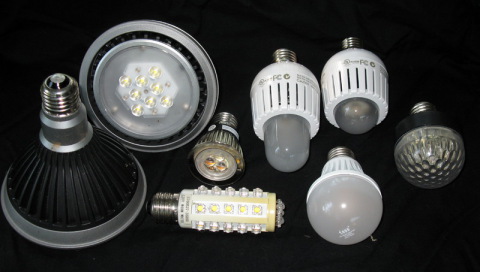How do They Work?
Light-emitting diodes (LED) are semiconductors. As electrons pass through this type of semiconductor, it turns into light. Compared to incandescent and CFL bulbs, LED lights are more efficient at turning energy into light. Therefore, less of the energy radiates from the bulb as heat. This is why LED bulbs are cooler during operation than incandescent and CFL bulbs.
As the light-emitting diodes create light, they warm up quite a bit for their size. LEDs are heat sensitive, so it's important that the heat move away so that it doesn't damage the semiconductors. In order to do this, these lights need a system to keep cool. Most LED lights have a heat sink plate that moves the heat away from the light-emitting diodes through the heat sink plate. Manufacturers make the heat sink plate out of a variety of materials, but it's commonly made from aluminum. Frequently, the heat sink becomes part of the design of the bulb.
An LED light bulb's heat sink usually weighs several ounces and can become hot once you turn on the light. From the heat sink plate, the heat moves into the air surrounding the bulb. If you place the bulb in an enclosed fixture, it keeps the heat from effectively moving away from the heat sink, raising the temperature around the light-emitting diodes. This, in turn, causes the LEDs to overheat, shortening the life of the bulb.
LED nowadays are incredibly good replacements for old incandescent bulbs. They illuminate instantly, throw out a good quality usable light and in most cases use less than 10% of the energy used by incandescent bulbs!!
Buying LED's from a reputable distributor normally ensures each one comes with an extensive warranty. Often 50,000 hours.
Try not to by cheap ones on websites. Pay the extra from a good well known stockist!! Its worth it in the long term.



